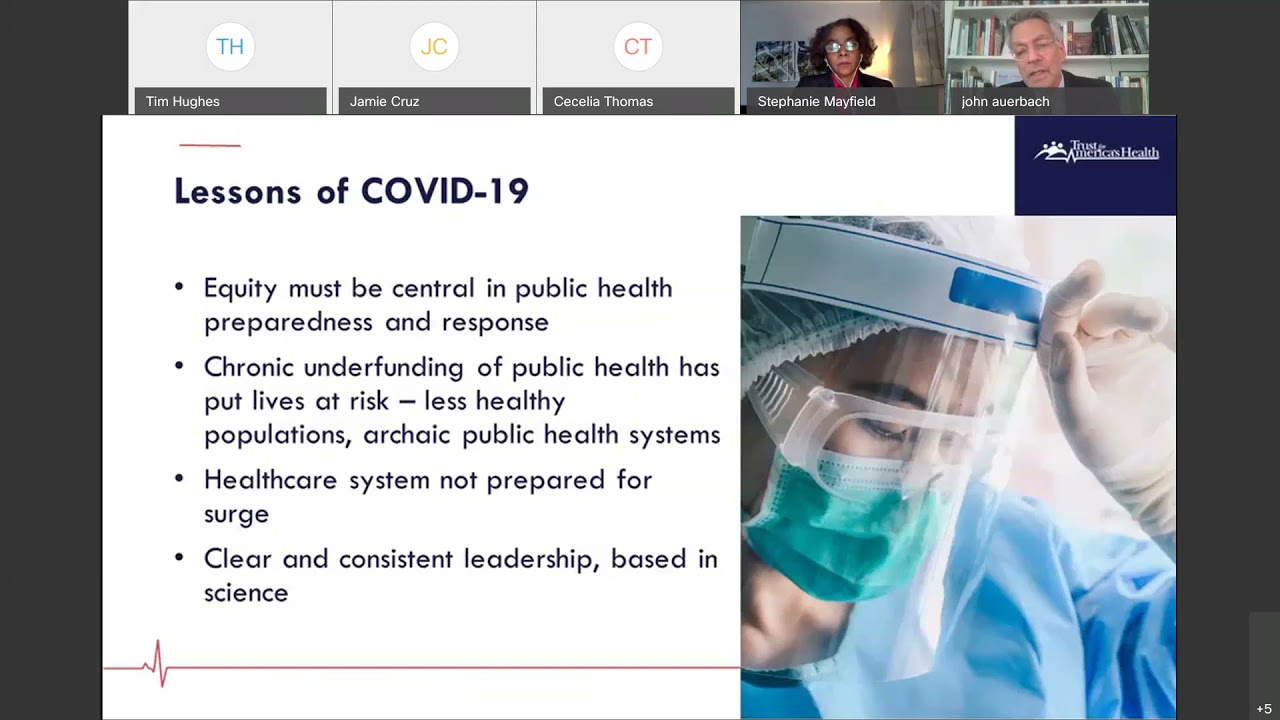Preliminary data shows COVID-19 crisis created higher rates of mental distress, substance use, and drug overdose; 2019 alcohol deaths were higher for every adult age group
(Washington, DC and Oakland, Ca) – May 18, 2021 – Newly released data show that 156,242 Americans died due to alcohol, drugs or suicide in 2019, a record number of such deaths in a single year. Furthermore, the COVID-19 pandemic increased stress and related substance use for many Americans.
During 2019, alcohol and drug-induced deaths increased, while suicide rates were slightly lower. Over the last decade, 2009 – 2019, the number of alcohol and drug related and suicide deaths increased by 52 percent. These data are part of a report releasing today, Pain in the Nation: Alcohol, Drug and Suicide Deaths, the latest in a series of reports tracking the nation’s deaths of despair crisis produced by Trust for America’s Health and Well Being Trust.
Americans dying due to drug-induced causes was five percent higher in 2019 than the previous year, for a total of 74,511 deaths. The data are also beginning to show changes in the most affected population groups. For many years, the death rate for drug overdoses among whites was substantially higher than other racial groups, data are now showing dramatic increases in drug related deaths for certain populations of color. For the year, drug-induced deaths were up by 15 percent among Latinos and Blacks, 11 percent for American Indians and 10 percent for people of Asian descent. Among whites’ drug-induced deaths rose by 2 percent for the year.
For the first time since 2005, 2019 deaths rates from drugs for Black people was higher than that of whites.
Synthetic opioids, such as fentanyl, (up 16%), cocaine (up 8%) and other psychostimulants (e.g., methamphetamine and ecstasy) (up 28%) continue to drive drug-induced deaths higher. Natural/semisynthetic opioids (e.g., Prescription opioids) and heroin overdoses declined for the year.
In 2019, 39,043 Americans died from alcohol-related causes, up 4 percent over 2018. It was the tenth year in a row that the alcohol death rate increased. Alcohol deaths were highest among American Indians (31.9 deaths per 100,000 people), adults over 55 (28.3 deaths per 100,000 people) and males (15.2 deaths per 100,000 people). All groups, except children, had a higher rate of alcohol deaths in 2019 compared with 2018 and early 2020 data show that rates of consumption are continuing to increase.
One bright spot in the data is that for the year (2019), the age-adjusted suicide rate declined from 14.2 to 13.9 deaths per 100,000 deaths, a 2 percent decrease. Americans who died by suicide in 2019 totaled 47,511. This decline in suicide deaths was the first since 2005 and is statistically significant. Preliminary 2020 data show a further small decrease in suicides despite the COVID crisis.
States with the highest age-adjusted death rates from alcohol, drugs and suicide combined in 2019 were New Mexico (88 deaths per 100,000 people) and West Virginia (85.1 deaths per 100,000 people).
“These data underscore, yet again, the massive problem we have had on our hands in this country,” said Benjamin Miller, PsyD, Chief Strategy Officer, Well Being Trust. “The trends are clear we are going in the wrong direction. If we are serious about addressing mental health and addiction, we must invest in strategies that are comprehensive and integrated. Incremental tinkering will not change the course or direction sufficiently enough – it’s time for bold leadership to demand more.”
The Impact of the COVID-19 Pandemic
The COVID-19 pandemic impacted Americans in almost inconceivable ways including illness, the loss of loved ones, job loss, financial stress, food insecurity, social isolation, and learning loss and the interruption of school-based services for millions of children. These stressors are impacting rates of alcohol and drug use and drug overdose deaths as more people turn to substances to help them cope.
From March 2019 to March 2020, the number of calls to the Substance Abuse and Mental Health Services Administration Disaster Distress Helpline increased by 891 percent. The U.S. Household Pulse Survey found that the number of adults reporting symptoms of anxiety or depression from April 2020 through March 2021 was triple the number who reported such symptoms in 2019. A June 2020 CDC study found that 13 percent of adults “started or increased substance use to cope with pandemic-related stress or emotions.”
“The drug, alcohol and suicide crisis has been growing for a decade and growing in uneven ways. The COVID crisis has increased stress on all Americans and has worsened the differential impact of health inequities on communities of color. While all Americans need support coping with the pandemic, people who are currently struggling with addiction or a mental health issue need urgent attention,” said John Auerbach, President and CEO Trust for America’s Health.
The report includes policy solutions and recommendations including:
- Expand programs that support families and communities and reduce traumatic experiences, particularly in childhood.
- Expand access to substance use prevention programs and mental health and resiliency programs in schools.
- Tailor prevention and intervention programs for communities of color.
- Strengthen crisis intervention programs and supports.
- Increase access to mental health and substance use healthcare through full enforcement of the Mental Health Parity and Addiction Equity Act.
- Reduce availability of illicit opioids and psychostimulants.
- Limit access to lethal means of suicide.
- Expand efforts to combat stigma about mental health issues.
- Improve mental health data accuracy, completeness and timeliness.
- Expand the mental health and substance use treatment workforce; promote diversity and culturally informed practices within the workforce.
- Build community capacity for early identification and intervention with individuals who need mental health care.
# # #
Trust for America’s Health is a nonprofit, nonpartisan organization that promotes optimal health for every person and community and makes the prevention of illness and injury a national priority.
Well Being Trust is a national foundation dedicated to advancing the mental, social, and spiritual health of the nation. Created to include participation from organizations across sectors and perspectives, Well Being Trust is committed to innovating and addressing the most critical mental health challenges facing America, and to transforming individual and community well-being. www.wellbeingtrust.org. Twitter: @WellBeingTrust


